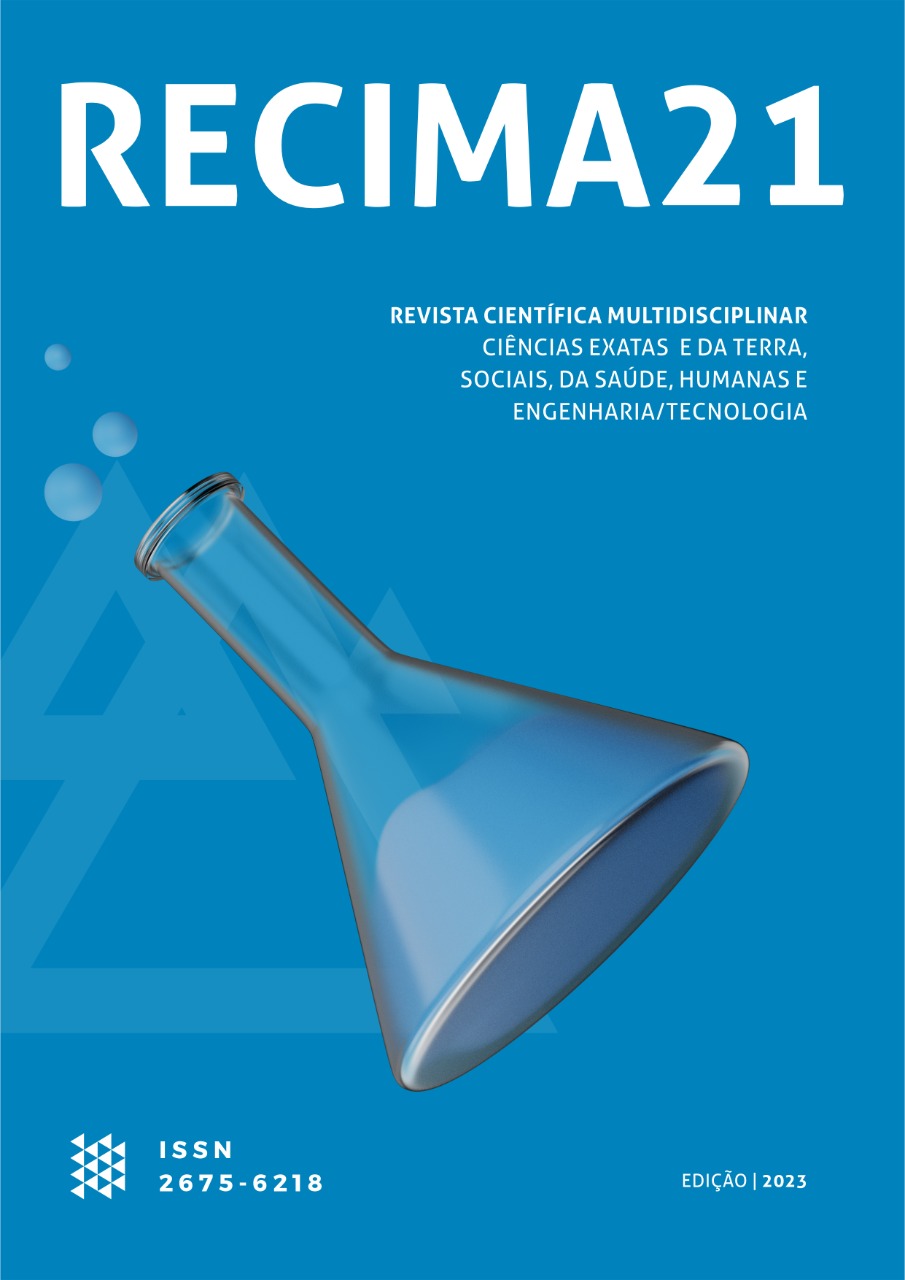O USO E REGULAMENTAÇÃO DE FREQUÊNCIAS EXTREMAMENTE BAIXAS - ELF
DOI:
https://doi.org/10.47820/recima21.v4i11.4348Palavras-chave:
campos eletromagnéticos , frequências extremamente baixas , regulamentações, sistema imunológico, exposição ocupacionalResumo
A exposição humana aos campos eletromagnéticos gera uma preocupação constante aos possíveis efeitos na saúde. Estudos científicos têm sido cuidadosos para investigar se a exposição crônica a tais frequências pode ter efeitos adversos à saúde, como efeitos carcinogênicos, neurocomportamentais e sobre o sistema imunológico.Dito isso, em muitos países, existem diretrizes e regulamentos para controlar a exposição humana aos campos eletromagnéticos. A questão que se coloca é saber se as frequências extremamente baixas também dependem de regulamentações e se podem gerar algum dano à saúde. Não há consenso sobre a nomenclatura das faixas de frequência de 0 a 300 Hz. Existem documentos que tratam toda esta faixa como Frequência Extremamente Baixa (sigla ELF, em inglês). Porém, também existem referências que classificam Frequências Extremamente Baixas (ELF) na faixa de 0 a 30 Hz e Frequências Super Baixas (sigla SLF, em inglês) na faixa de 30 a 300 Hz. A utilização de frequências extremamente baixas (ELF, na sigla em inglês), em diversas aplicações, tem sido objeto de debate em relação à necessidade de regulamentação. Muitos países implementam regulamentações gerais para controlar a exposição e garantir a segurança, as quais incluem as ELF. A necessidade de regulamentação depende das preocupações de saúde e segurança associadas a essas frequências de uso, bem como das políticas e normas protegidas em cada país. No Brasil, a entidade responsável pela regulamentação é a ANATEL. Foram adotados os limites recomendados pela Organização Mundial de Saúde – OMS.
Downloads
Referências
FURLAN, Silvânia Helena; BUENO, Cesar Júnior; MONTEIRO DE OLIVEIRA, Gabriel Fernando Furlan; LEITE, Juliana Aparecida Borelli Pereira. Effect of satellite-emitted frequency sequences on Phakopsora pachyrhizi control, on soybean nutrition and yield. Arq. Inst. Biol., v. 90, p. 1-10, e00102022, 2023.
RODRIGUES, F. G. F.; BRIZOLA, A. Low frequency radiation and possible harmful influence on biological systems. Rev. Bras. Ensino Fís., v. 41, n. 3, 2019.
UNIONPÉDIA. O mapa conceitual. Portugal: Unionpédia, s. d.
WIKIPÉDIA. A enciclopédia livre. [S. l.]: Wikipédia, s. d.
WORLD HEALTH ORGANIZATION. Electromagnetic fields and public health Electromagnetic fields and public health Static electric and magnetic fields Backgrounder. [S. l.]: WHO, March 2006. Disponível em: https://www.who.int/teams/environment-climate-change-and-health/radiation-and-health/non-ionizing/emf.
ENDEREÇOS ELETRÔNICOS/SITES
espectro@anatel.gov.br
http://www.anatel.gov.br/legislacao
https://en.wikipedia.org/wiki/Radio_frequency
https://pt.wikipedia.org/wiki/Super_low_frequency
https://wiki.sj.ifsc.edu.br/images/d/d8/2.5IFSC_Integrado_RDT2015 1.pdf
https://www.anatel.gov.br/legislacao/resolucoes.
https://www.anatel.gov.br/setorregulado/atribuicao-destinacao-edistribuicao-de-faixas
https://www.gov.br/anatel/pt-br/regulado/certificacao-de-produtos/ocds
https://www.gov.br/anatel/pt-br/regulado/outorga/servicolimitado-privado
https://www.gov.br/anatel/ptbr/regulado/radiofrequencia
https://www.teleco.com.br/tutoriais/tutorialwifimanaus1/pagina_3.asp
LEGISLAÇÃO/RESOLUÇÕES
Lei nº 9472/97 – Lei Geral das Telecomunicações
Lei nº 11.934, de 5 de maio de 2009
Resolução nº 671, de 3 de novembro de 2016
Resolução nº 700, de 28 de setembro de 2018.
Resolução nº 703, de 1º de novembro de 2018 (SEI nº 3434180)
Documento "Propostas de Atuações Regulatórias" (SEI nº 3077101)
Resolução Anatel 759 de 23 de janeiro de 2023
Downloads
Publicado
Edição
Seção
Categorias
Licença
Copyright (c) 2023 RECIMA21 - Revista Científica Multidisciplinar - ISSN 2675-6218

Este trabalho está licenciado sob uma licença Creative Commons Attribution 4.0 International License.
Os direitos autorais dos artigos/resenhas/TCCs publicados pertecem à revista RECIMA21, e seguem o padrão Creative Commons (CC BY 4.0), permitindo a cópia ou reprodução, desde que cite a fonte e respeite os direitos dos autores e contenham menção aos mesmos nos créditos. Toda e qualquer obra publicada na revista, seu conteúdo é de responsabilidade dos autores, cabendo a RECIMA21 apenas ser o veículo de divulgação, seguindo os padrões nacionais e internacionais de publicação.













